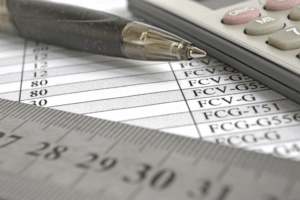
For example, Google’s .30 total debt-to-total assets may also be communicated as 30%. A steadily rising D/E ratio may make it harder for a company to obtain financing in the future. The growing reliance on debt could eventually lead to difficulties in servicing the company’s current loan obligations. Very high D/E ratios may eventually result in a loan default or bankruptcy. In the banking and financial services sector, a relatively high D/E ratio is commonplace.

Step 3: Analyze the results
Pete Rathburn is a copy editor and fact-checker with expertise in economics and personal finance and over twenty years of experience in the classroom. Earlier this year, Bank of America analysts warned the U.S. debt load is about to ramp up to add $1 trillion every 100 days—fueling a bitcoin price surge. The bitcoin price has soared back to its all-time high of around $70,000 per bitcoin, recovering from https://www.bookstime.com/compare-bookkeeping-solutions a 2022 crash that Goldman Sachs’ crypto lead thinks could signal a bitcoin price “turning point.” Secured debt is backed by collateral, meaning something of equal value to the debt is given in its place. If someone does not properly pay off the debt, the collateral is taken away. For example, if someone fails to make mortgage payments, their house (in this case, the collateral) could be foreclosed on.
- The purpose of calculating the debt ratio of a company is to give investors an idea of the company’s financial situation.
- While it’s important to know how to calculate the debt-to-asset ratio for your business, it has no purpose if you don’t understand what the results of that calculation actually mean.
- There are different variations of this formula that only include certain assets or specific liabilities like the current ratio.
- The Ascent, a Motley Fool service, does not cover all offers on the market.
- This is a red signal to the company as a rise in interest rate will damage the financials of the company.
What does a high total debt-to-total assets ratio indicate?

One of its major drawbacks is that it doesn’t distinguish between types of assets—whether they are liquid or illiquid, tangible or intangible. To assess the types of assets and their liquidity, see this liquidity ratios article. You will need to run a balance sheet in your accounting software application in order to obtain your total assets and total liabilities. The balance sheet is the only report necessary to calculate your ratio. Companies with high debt-to-asset ratios may be at risk, especially if interest rates are increasing.
- The overall market has debt-to-asset ratios averaging between 0.61 and 0.66 over the last five years.
- Similarly, a business may face a significant financial risk if its debt is subject to a sudden hike in interest rates.
- Any opinions, analyses, reviews or recommendations expressed here are those of the author’s alone, and have not been reviewed, approved or otherwise endorsed by any financial institution.
- This conservative financial stance might suggest that the company possesses a strong financial foundation, has lower financial risk, and might be more resilient during economic downturns.
- As businesses mature and generate steady cash flows, they might reduce their reliance on borrowed funds, thereby decreasing their debt ratios.
How to Calculate the Debt-to-Asset Ratio
If both companies have $1.5 million in shareholder equity, then they both have a D/E ratio of 1. On the surface, the risk from leverage is identical, but in reality, the second company is riskier. The result means that Apple had $3.77 of debt for every dollar of equity. But on its own, the ratio doesn’t give investors the complete picture. It’s important to compare the ratio with that of other similar companies.
Best High-Yield Savings Accounts Of 2024
Trend analysis is looking at the data from the firm’s balance sheet for several time periods and determining if the debt-to-asset ratio is increasing, decreasing, or staying the same. The business owner or financial manager can gain a lot of insight into the firm’s financial leverage through debt to asset ratio trend analysis. The long-term debt ratio focuses specifically on a company’s long-term debt (obligations due in more than a year) relative to its total assets or equity. The debt-to-total-assets ratio is a popular measure that looks at how much a company owes in relation to its assets.
Total Debt-to-Total Assets Ratio: Meaning, Formula, and What’s Good – Investopedia
Total Debt-to-Total Assets Ratio: Meaning, Formula, and What’s Good.
Posted: Thu, 22 Feb 2024 08:00:00 GMT [source]
The D/E Ratio for Personal Finances
- For companies with low debt to asset ratios, such as 0% to 30%, the main advantage is that they would incur less interest expense and also have greater strategic flexibility.
- As a result, Company C might find it too hard to attract investors and opts for debt financing to meet its capital needs.
- This leverage ratio is also used to determine the company’s financial risk.
- The debt-to-asset ratio measures that debt level and assesses how impactful that might be for any company.
Creditors use the ratio to see how much debt the company already has and whether the company can repay its existing debts. This will determine whether additional loans will be extended to the firm. A good debt-to-assets ratio presents a healthy financial picture to creditors that shows smart saving, spending, budgeting, and debt management. Debt-to-asset ratio percentages show growth over a period of time, and how assets have been acquired and maintained.
Create a Free Account and Ask Any Financial Question



